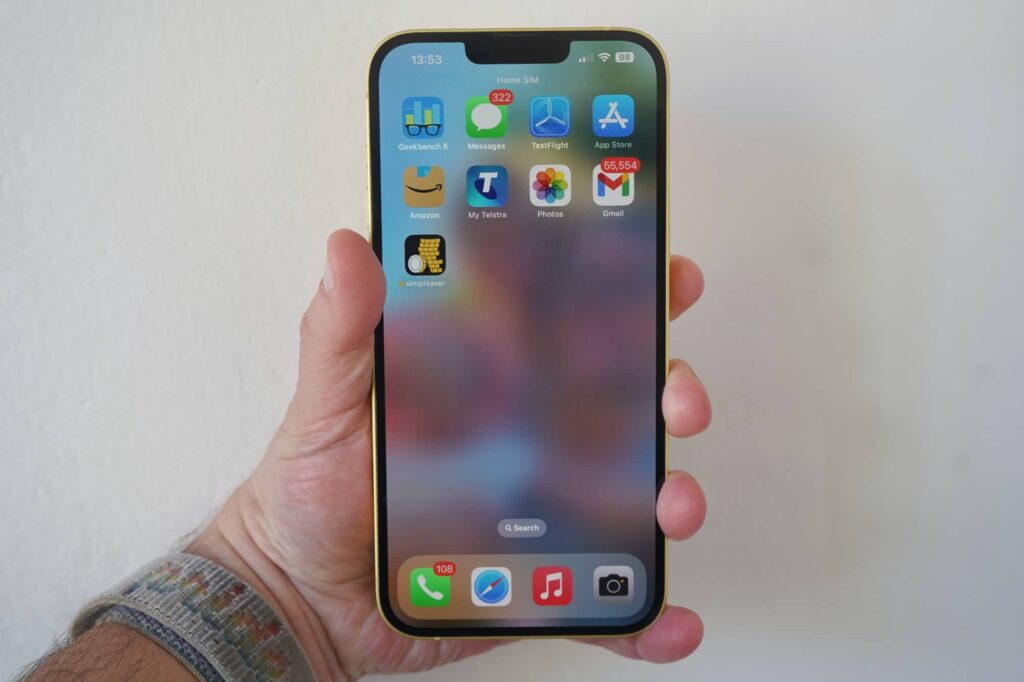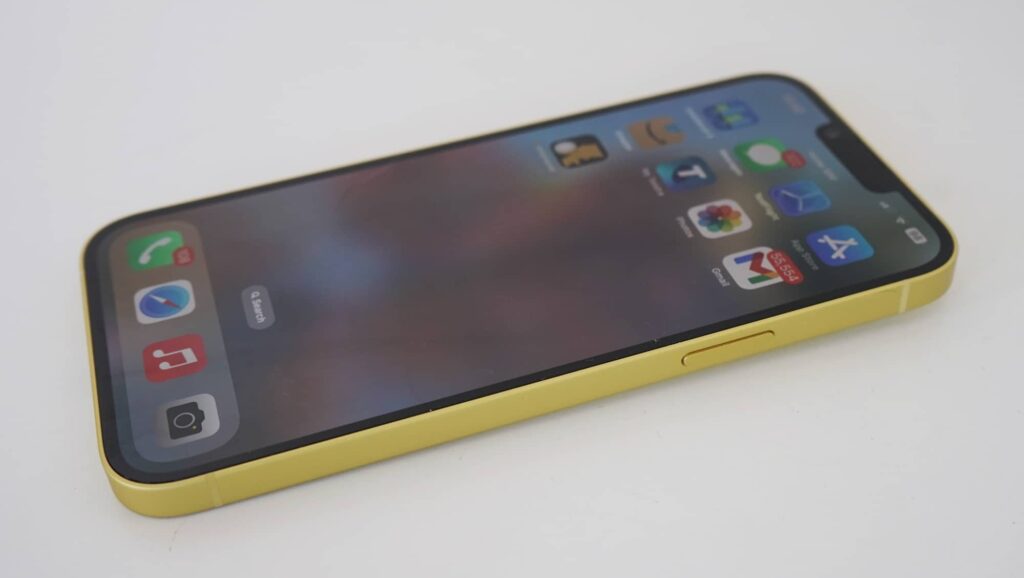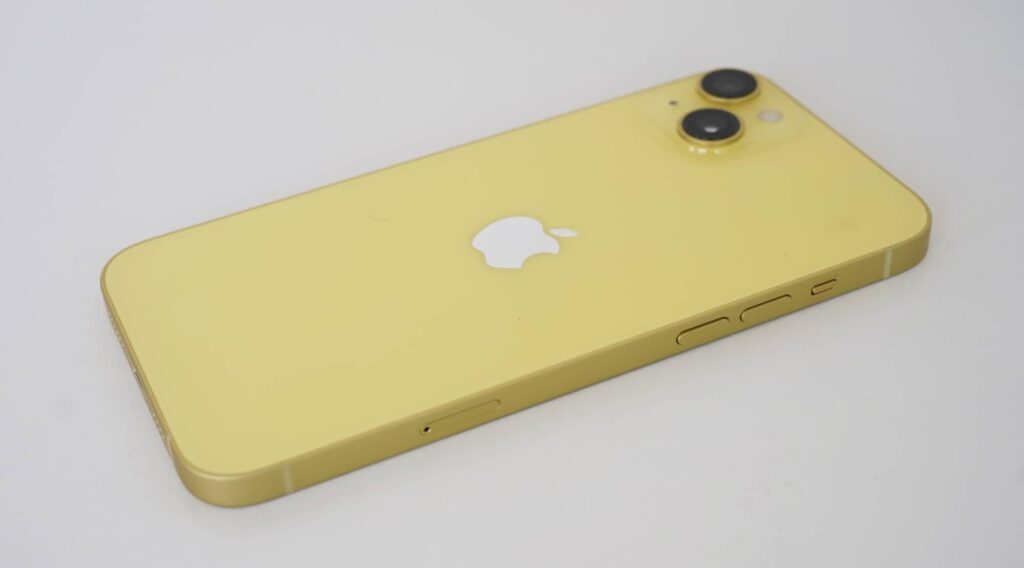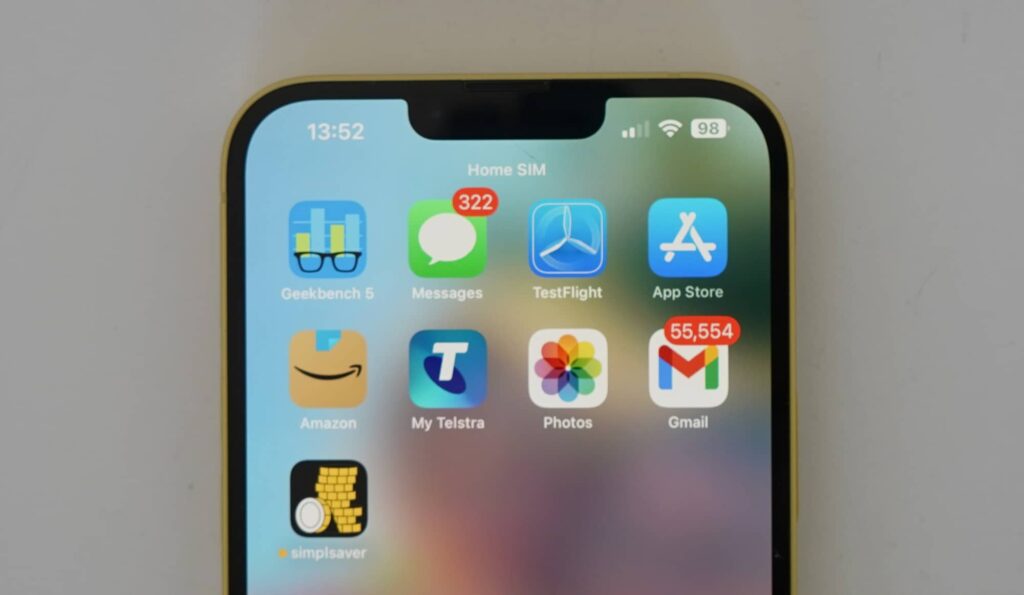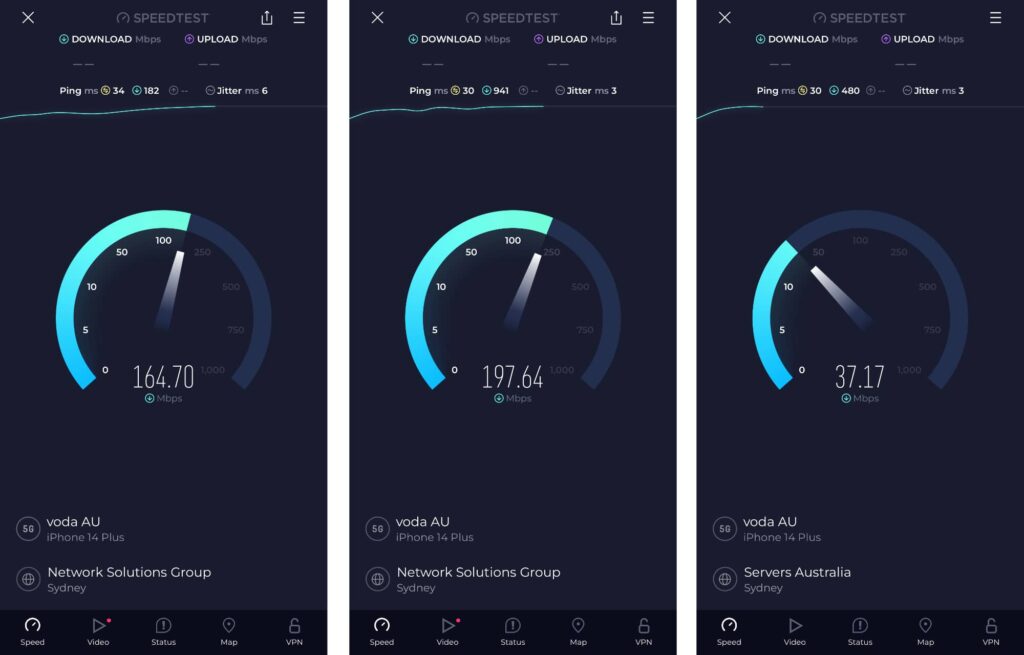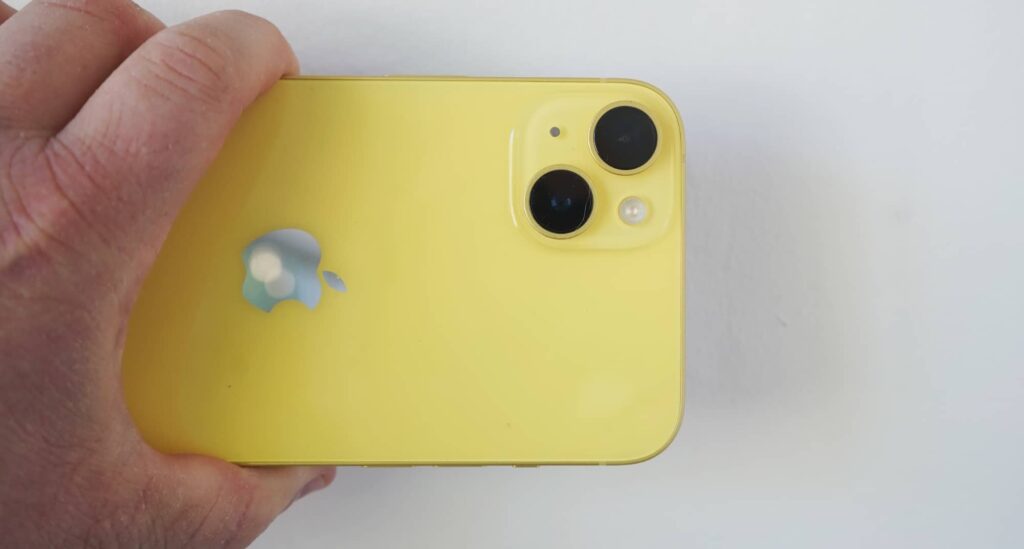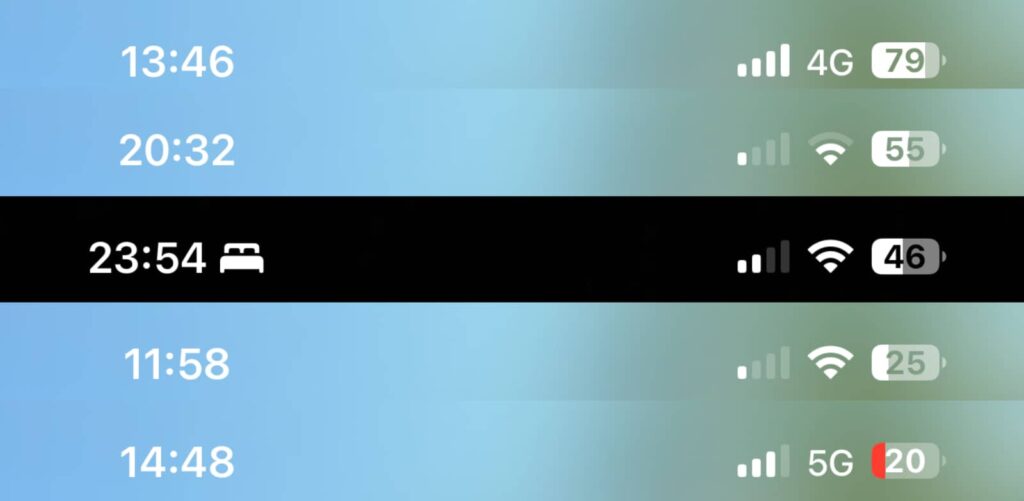Quick review
The good
The not-so-good
Not sure if you want the regular sized iPhone or a bigger model for much more? The iPhone 14 Plus splits the difference for less money. Does it work?
A few years into Apple’s experiment with the pint-sized iPhone, the experiment appears to be over. While we loved the small iPhone Mini, it wasn’t set to be a part of the iPhone range forever, and Apple has a new focus: bigger.
That appears to be much of what Apple is eyeing these days, as it kills off the iPhone 13 Mini and moves to a choice of regular or big, just like it has with the Pro models.
If you want the best iPhone money can buy, there has been an option of the 6.1 inch Pro or the 6.7 inch Pro Max, giving you a choice of what is arguably the same tech and feature set with a difference in size: normal or much larger.
In the current iPhone 14 range, that approach is being applied for folks who might want to spend a little less. Rather than fork out for the extra cost of the Pro and Pro Max models, you can opt for an iPhone 14 that’s bigger and spend a little less.
But is it worth it, and is the iPhone 14 Plus a winner worth checking out?
Design
A slightly bigger take on the standard iPhone, the iPhone 14 Plus is what happens when you take the regular 6.1 inch iPhone 14 and make it the size of the 6.7 inch iPhone 14 Pro Max.
And that’s exactly what this is, adopting the same aluminium frame, glass casing, and colourful exterior which in our review model was the yellow iPhone 14 Plus model.
If you’ve seen an iPhone 14 or even the iPhone 13 before it, the 14 Plus is the spitting image, except bigger. It’s basically just a bigger iPhone 14.
Features
Not that there’s anything wrong with that, mind you, and it’s the same from a feature standpoint, at that.
Inside the iPhone 14 Plus, you can expect the exact same hardware set as its 14 sibling, save for a bigger screen and bigger battery.
As such, you can expect to find Apple’s A15 Bionic chip in this phone, same processor used in the iPhone 13 Pro and 13 Pro Max, not to mention the current iPhone 14. That’s paired with a choice of either 128GB, 256GB, or 512GB storage, and it rocks up with iOS 16 out of the box, though will see the iOS 17 update when it arrives later this year.
You’ll find your regular assortment of iPhone connections here, including the one wired Lightning port, plus support for 802.11a/b/g/n/ac/ax WiFi 6, Bluetooth 5.3, GPS, 5G, Near-Field Communication (NFC) for Apple Pay, and ultra wideband for use with the Apple AirTag.
Apple’s Face ID technology is also here, sitting next to a 12 megapixel F1.9 autofocusing camera, distinct from the two cameras on the back covering 12 megapixels at F1.5 on the wide camera and 12 megapixels at F2.4 on the ultra-wide, all of which can handle 4K video.
Finally, there’s that display, which is similar to the big screens seen on the Pro Max iPhone models thus far, delivering another 6.7 inch OLED display and a resolution of 2778×1284.
That all arrives in a phone measuring 7.8mm thick, weighing 203 grams, and rated IP68 water resistant. The iPhone 14 Plus also supports wireless charging and Apple’s magnetic MagSafe charging connector, though we’d advise against charging if you’re also testing the water resistance rating.
In-use
With the features out of the way, it’s time to get stuck into using the 14 Plus, and while it’s a bigger iPhone 14, using this phone is very much like using any other iPhone.
Split between the size of the iPhone 14 Pro Max and the feature set of the iPhone 14, you’re basically just using a bigger iPhone, and that’s a-ok.
Press the side power button to switch on and bring it back from standby, and swipe up to get in. Use your gestures and you’ll be find using the phone, just like you would any other mostly-touchscreen iPhone, since the iPhone X popped up several years ago.
Granted, you won’t get the always-on screen of the bigger Pro Max, but right now, that’s left for just the “Pro” model of the iPhone.
Performance
You also won’t get the same chip as the Pro models, with the A16 Bionic only part of the iPhone 14 Pro and Pro Max, and missing in action in this generation. Rather, the bigger 14 Plus gets the same chip from the older iPhone 13, which was the exact same chip in the iPhone 14, as well.
Not that it’s necessarily a bad thing: the A15 used in these models is still very, very fast, and should be able to handle app and gaming needs for some time to come.
However it does mean the 14 Plus benchmarks look a little different from the 14 Pro Max you might want to compare them with.
Interestingly, the iPhone 14 Plus handles itself quite well against the previous Pro Max models, partly because it shares the same chip used in the previous iPhone 13 Pro Max, which itself is also better than the one used in the iPhone 12 Pro Max.
That means that while this plus-sized iPhone 14 isn’t quite as powerful as the Pro Max 14, it carries the speed of its Pro Max siblings from prior years.
Fortunately, the mobile speeds are about the same, with sub-6 5G supported in Australia, and a solid assortment of mobile speeds available locally to anyone in reach of a decent 5G network.
Your speeds may differ, of course, thanks in part to the telco you use, where you are, the amount of people using it relative to where you are, and so on, but we found speeds as high as 280 in testing in Sydney, Australia on the Vodafone network for the 14 Plus.
So that’s not too shabby.
That’s more or less like the iPhone 14 we saw earlier, and it’s the same effort when you start looking into the camera side of things as well.
Camera
Sporting the same camera as the iPhone 14, you’ll find a decent wide angle 12 megapixel plus the capable ultra-wide from that same model, delivering a solid little two camera system.
It’s a shame you’re not getting the new 48 megapixel sensor from the Pro Max or its 3X telephoto camera, nor do you get the macro capabilities found in the ultra-wide on that respective model.
Outside of those changes, the two camera setup on the iPhone 14 Plus is friendly enough, delivering great imagery with crisp colours, sharp edges, and some of the better portrait style images you can find in a two camera setup.
Granted, you’re not going to find the same level of flexibility the Pro/Pro Max affords you with its 1X, 2X, and 3X portrait mode, but you’ll still get to capture those editable blurry background portraits all the same, and the camera does well enough here, too.
It’s much the same story with the front-facing camera, as Apple adopts the same selfie camera from the iPhone 14. One of those unexpected updates, you’ll find autofocus built-in now, which means selfies can be that much sharper at the front. Handy.
Battery
While comparisons between the iPhone 14 and iPhone 14 Plus will obviously centre around the size of the screen, that massive display also means there’s something else to compare: the battery.
With greater screen sizes comes greater battery size, and that’s certainly true in the iPhone 14 Plus, which found a good day and a half maximum battery life in our tests, delivering one of the better outcomes of any iPhone thus far.
Your mileage may vary, of course, and there were days where we found a full day was more likely than the day and a half some of our tests managed, but sufficed to say, there’s plenty of battery life in the bigger iPhone 14.
Value
Jumping to a bigger iPhone will cost you a little more, with the cost of the iPhone 14 Plus running up a little less than $200 per tier, which isn’t a substantial jump, though you don’t get a lot of difference for that price.
About the only major change is the screen size and a little push in the battery life, which may or may not be worth the price jump for you.
At least the iPhone 14 Plus isn’t an iPhone 13 with a better front-facing camera, which is largely what the standard iPhone 14 is. However, with a little over $300 difference between the 14 Plus and the 14 Pro Max, the jump to an iPhone 14 Pro Max makes a lot more sense value-wise.
What needs work?
The little that has chance in the 14 to the 14 Plus helps cite not so much what’s wrong with the 14 Plus, but what feels like it could be better, because it has the exact same omissions as the standard 14.
For instance, the lack of a 120Hz screen is a touch sad, but not surprising given that it’s one of the things you pay for in the premium model. The same is true with the camera, which sees the same set as the dual 12 megapixel wide and ultra-wide of the standard 14, but skips out on the 3X telephoto and the new 48 megapixel sensor of the regular.
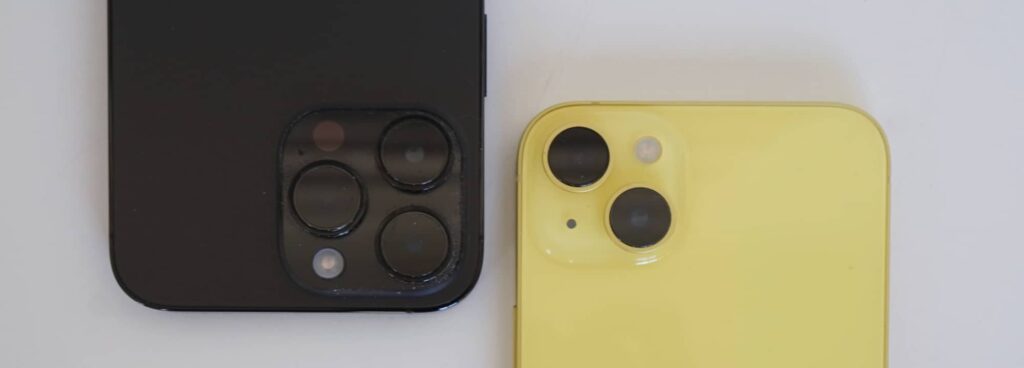
The iPhone 14 Plus is technically just a bigger iPhone 14, and while that’s not a bad thing, it’s also not an amazing thing.
If you’re after a big iPhone, we’d look to the iPhone 14 Pro Max. It’s just a better big phone, or if you can find a 13 Pro Max, that. The 14 Plus isn’t even quite as strong as that older model, and offers similar performance without as impressive a camera setup.
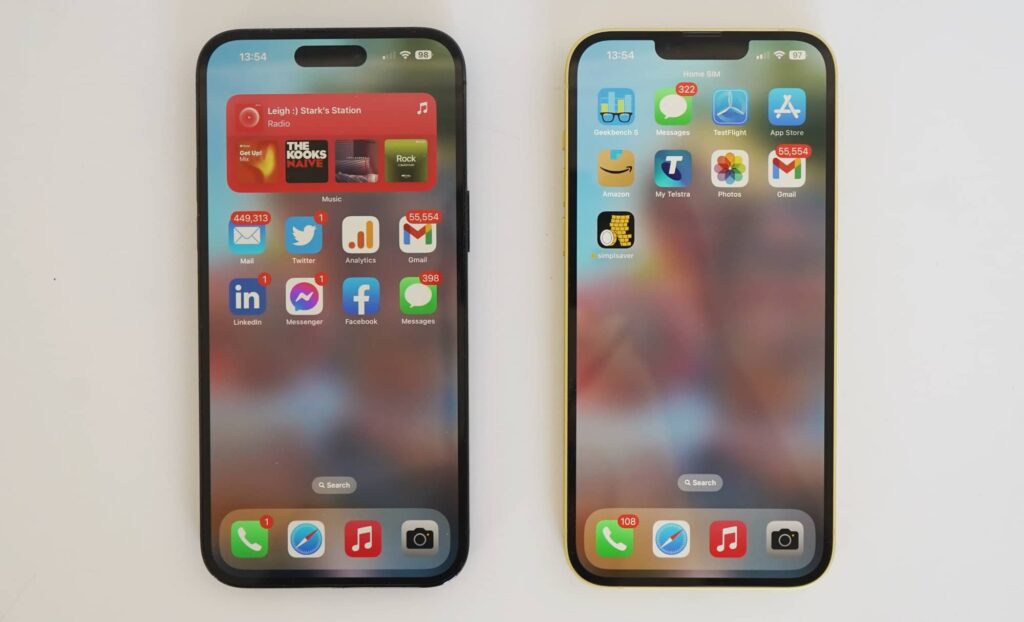
Final thoughts (TLDR)
While there are clear disadvantages for picking Apple’s less-pro big phone, there’s also a clear advantage: it’s a more affordable take on the current sizeable iPhone.
Up until now, if you’ve wanted a big iPhone, you’ve had to spend much more. The big iPhones have almost always come with an advantage, such as more in the way of camera prowess alongside that bigger screen, but these days, the amazing features mightn’t be as convincing as they once were.
We love the always-on 120Hz 6.7 inch screen of the iPhone 14 Pro Max and the excellent telephoto camera with support for macro in the wide-angle, plus the dynamic island is a nice touch, but you mightn’t care. And if you’re after a big-screened iPhone, they mightn’t draw you over the way you expect, especially not with a minimum $300 difference.
While there are clear reasons to pick the iPhone 14 Pro Max over the iPhone 14 Plus, $300 is no small amount of change. If all you want is the bigger screen and none of the extra fix-ins, the iPhone 14 Plus is a big iPhone for less. That’ll be a win for a lot of people.
Long term, we’d still argue the benefits of the Pro model more than make up for the cost, but if you’re not sold and saving money is more important, the 6.7 inch iPhone 14 Plus makes a compelling case for a big iPhone made more affordable.




